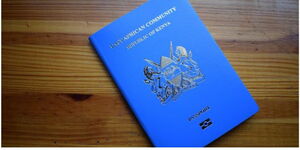On Thursday, September 17, Nairobi Governor Mike Sonko used his social media pages to highlight the rampant menace of drug abuse among Kenya's youth.
The governor shared a video that had been circulating across various social media platforms depicting a group of youth indulging in drugs inside a car while in traffic.
The visibly intoxicated group can be heard urging the driver of the vehicle to take a 250ml cup of traditional brew in one gulp.
"As parents we must be extra vigilant to avoid our youth from slipping into drug abuse through peer group influence. It's not a bad idea to know who their social friends are. Again, befriend your kids to be able to arrest any behavior change on time," Sonko advised after sharing the video.
The National Authority for Campaign against Alcohol and Drug Abuse (NACADA) Strategic Plan 2019-2022 report details the prevalence of drug abuse within Kenya's 8.8 million primary school children as follows:
- 7.2% or 633,600 pupils have used alcohol
- 6% or 528,000 pupils have used Tobacco
- 3.7% or 325,600 pupils have used Khat/Miraa
- 1.2% or 105,600 pupils have used Bhang
- 0.7% or 61,600 pupils have used Cocaine
- 0.5% or 44,000 pupils have used on Heroin
Alcohol and drug use is also rampant among secondary schools as data by NACADA indicates an increase in usage over the last decade.
The study shows life time use of drugs among secondary school students as follows: 508,132 for alcohol use, 369,155 for khat/miraa, 349,613 for prescription drugs, 314,869 for tobacco, 162,863 for bhang/cannabis, 49,945 for inhalants e.g. glue and petrol, 26,058 for heroin, and 23,887 for cocaine.
Speaking during a recent interview, NACADA CEO, Victor Okioma, revealed that alcohol was still the most highly abused substance both in and out of the school setting.
“Alcohol is the most abused substance, with a prevalence rate of 12.2%. 10% of substance-related disorders are linked to liquor,” he disclosed.
Across the counties, Nairobi (18.4%) leads in alcohol-related disorders, followed by Western at 13.1%, while the Eastern region stands at 10.6%.
On a positive note, Central Kenya recorded the second lowest rate of 8.3% after the northeast region with 1.4%. This is a sharp decline in the region that has been previously known to harbour a huge proportion of alcohol abusers in the past.
In line with Kenya's Vision 2030, NACADA (in its report) highlighted its overall goal and plan to curb the vice of drug abuse in Kenya.
"To reduce the onset and prevalence of alcohol and drug abuse by 2% by 2022," reads the agencies overall goal.
The agency also highlighted the following Strategic Focus Areas moving forward:
- Public Education and Advocacy
- Counselling, Rehabilitation & Reintegration
- Compliance, Quality Control and Standards
- Research, Policy and Planning
- Institutional Strengthening
- Leadership and Integrity
The ongoing pandemic has seen a surge in substance abuse, as students have been idling at home since schools were closed indefinitely in March 2020.
On June 26, 2020, Kenya joined the world to observe the International Day against Drug Abuse and Illicit Trafficking amid revelations that People Who Use Drugs (PWUD), are at a high risk of contracting Covid-19.
The Chief Administrative Secretary (CAS), Dr. Rashid Aman said behaviors associated with the use of drugs, may increase their vulnerability to the disease, reduce their immunity and disorder associated with physical and psychological comorbidity.
Poor discipline and personal hygiene can predispose the PWUD to contracting the virus, due to reduced adherence to containment measures, he said, revealing that the Ministry of Health is working to ensure continued access to care for persons who use drugs.
Dr. Rashid noted that during this period of Covid-19 and children being at home, there is need for parents to educate them about the harmful effects of alcohol and drugs use, and to discourage them from getting into drugs due to idleness.












